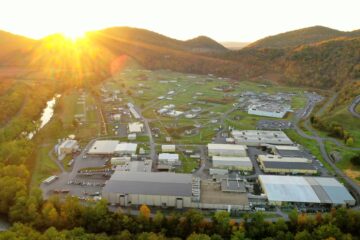The Royal Australian Air Force’s (RAAF) first MQ-4C Triton High Altitude Long Endurance (HALE) Uncrewed Aerial Vehicle (UAV) made its first flight on Thursday the 9th of November U.S. time taking to the skies above California. The aircraft, which rolled out of Northrop Grumman’s factory in September last year, had its first flight pushed back by a few weeks due to some technical issues encountered during early taxi tests.
Once the aircraft completes trials with Northrop Grumman in California it will fly East to Naval Air Station (NAS) Pax River. There, U.S. Navy (USN) Air Test and Evaluation Squadron One (VX-1) will take possession of the Triton, and run a series of calibration and certification activities. Assuming VX-1s work goes off without a hitch, the aircraft will then fly to RAAF Tindal around the middle of next year.

Even once the first aircraft arrives in Australia the fleet isn’t expected to reach Initial Operational Capability (IOC) until June 2026. While the path from initial aircraft delivery to IOC is never a quick one, for Triton, there are several unique challenges that it has to overcome as a UAV. One of these will be certifying the aircraft for low-altitude flight in civilian airspace.
Until that’s complete MQ-4C Tritons operating out of RAAF Tindal will be forced to fly race tracks in military airspace to gain altitude, before then moving out at high altitude. This procedure reduces the aircraft’s overall range compared to a more standard climb-out over civil airspace.
How many Tritons will Australia buy?
So far Australia has ordered four aircraft out of an original requirement for “up to” seven. According to Jake Campbell, Director of the Triton program at Northrop Grumman Australia, this number does not unlock the system’s full potential.
With a fleet of six or seven aircraft, he said, the RAAF would be able to maintain both an orbit at long range and an aircraft available for local tasking. If only four are available, however, the possibilities are limited to one local orbit with an aircraft occasionally available for other tasks.

While Campbell wouldn’t be drawn on the possibility of the RAAF ordering more aircraft, saying that it was a matter for the government, it’s seen as unlikely in Australian circles given the pressure on the U.S. production line. As part of its U.S. fiscal year 2024 budget request the USN proposed buying its final two aircraft in fiscal year 2025 for a total of 27 versus the 70 that were originally planned.
The Australian program was also impacted by a production pause instituted by the Trump administration in 2021 which delayed delivery of the first aircraft.
RAAF Crews in Training and Equipment on the way
At a media briefing during Indo Pacific 2023, Northrop Grumman Australia confirmed that the first hardware related to the program is scheduled to arrive at RAAF Edinburgh in South Australia before the end of this year. Company representatives also told Naval News that RAAF crew training is “well underway” in the U.S.

While Australian Tritons will be based at RAAF Tindal they’ll be controlled by the newly-reformed No. 9 SQN RAAF from RAAF Edinburgh, nearly 2,500 kilometres away. In a first for Australia, while a small number of 9 SQN personnel will be based at Tindal to provide taxi, landing and takeoff services, all maintenance on the operational aircraft will be carried out by Northrop Grumman Australia under an interim sustainment support contract.
This contract, which expires in 2027, will support the fleet through IOC and towards FOC when it will be replaced by a comprehensive through-life support contract.






